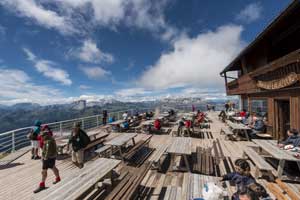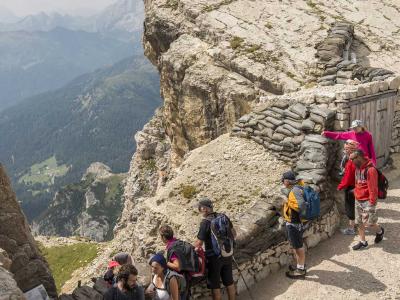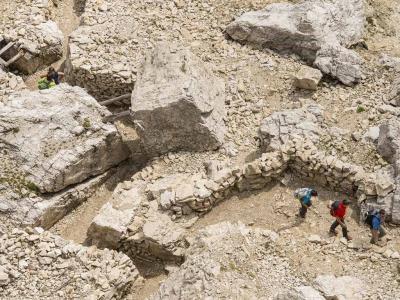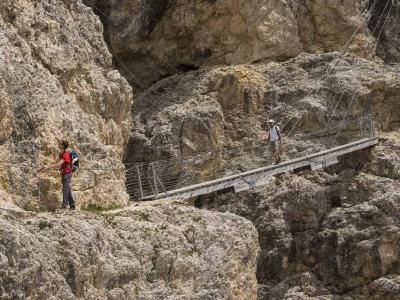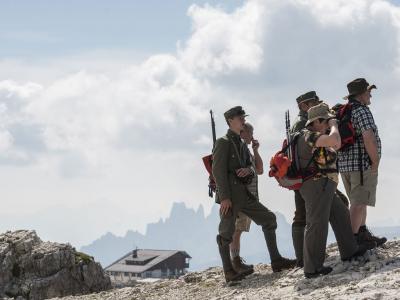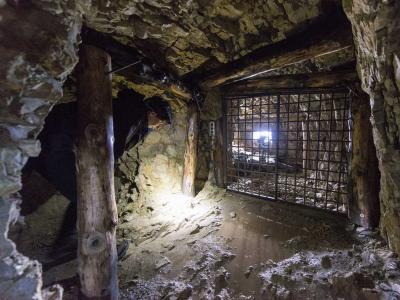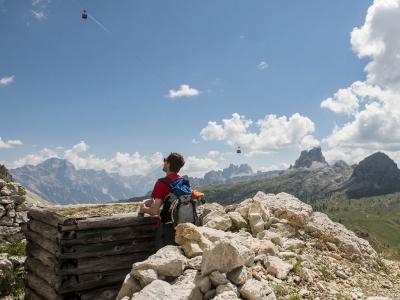The Italian advance towards Badia Valley, South Tyrol and Brenner was halted at the Valparola Pass in the face of the Austrian trenches.
Realising the futility of surface to surface attacks both armies began to excavate galleries and caverns in the mountain with the intent of blowing up their adversaries and fortifying their own positions.
Inside Lagazuoi today it is still possible to see the long tunnels, wooden huts, emplacements and trenches which form the open air museum of the Great War.
The trenches of the two opposing armies snaked their way along the summits of the mountains around Lagazuoi: Tofane, Castelletto, Great Lagazuoi, Sasso di Stria, Settsas , Col di Lana and Marmolada.
At the 5 Torri (Five Towers) and Averau spread the second Italian line with artillery emplacements and floodlights to light up the mountain side of Lagazuoi.
It was soon clear to both sides that the best protection from enemy artillery fire was provided by the mountain itself and so began the excavations with emplacements and encampments transforming Piccolo Lagazuoi into a natural fortification.
The only way to conquer the enemy's emplacements was to blow up a mine underneath them.
Five mines were detonated: four by the Austrian soldiers against the Martini Ledge and one by the Italian troops in order to conquer the“Anticima” emplacement on the peak of the Lagazuoi.
The soldiers of the two armies lived in the mountain until 1st November 1917. After the Battle of Caporetto the Italian army was defeated and had to abandon the front line on the Dolomites.
HISTORICAL INSIGHTS:
The Falzarego pass 1915-17 >>>
Mt. Lagazuoi 1915-17 >>>
The Martini Ledge 1915-17 >>>
Mt. Sasso di Stria 1915-17 >>>
The Lagazuoi tunnel >>>
The Kaiserjäger path >>>
A video-documentary, illustrated guides and graphic novels for those who want to delve into the history >>>


